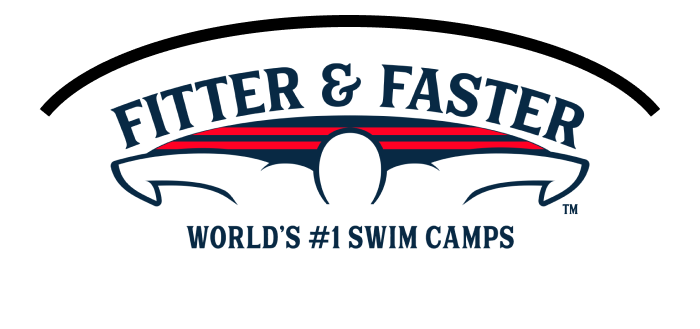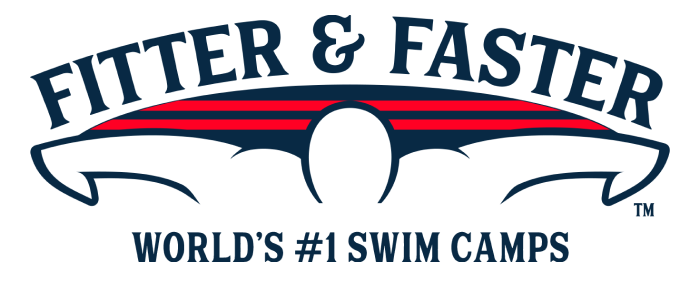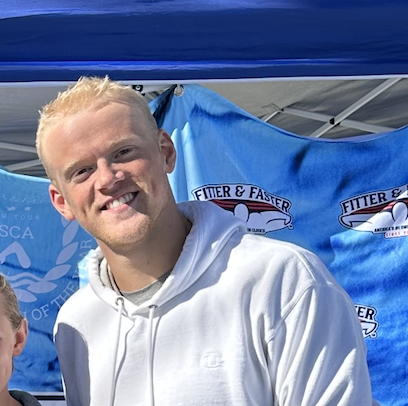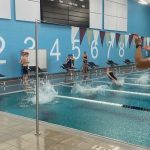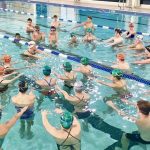How to Race Fast IM’s & 200’s Swim Camp (Ages 13 & over)
Martin Pear JCC
12701 N Scottsdale Rd,
Scottsdale,
AZ 85254
- days
- hours
- minutes
- seconds
Introduction
Fitter & Faster is producing a 2-day swim camp for competitive swimmers ages 13 and over at the Martin Pear JCC in Scottsdale, Arizona on December 27 & 28, 2025! Click here for the swim camp page for ages 10 to 12!
HOW TO RACE FAST IM's & 200's SWIM CAMP (Ages 13 & Over)
-> DAY 1 (Saturday, December 27): How to Race a Fast IM
-> DAY 2 (Sunday, December 28): How to Race a Fast 200
🔽 Scroll down for details on the curriculum!
✔️ Availability in each session is limited to 24 participants to ensure the highest level learning experience.
💡 SAVE when you purchase the “Entire Camp Bundle” for your swimmer.
SESSION START TIMES (Both Days): Check-in 12:15 PM, Camp 12:30-3:30 PM
Suggested Participants
Our top priority is to provide a world-class learning experience for all participants at all of our camps. This camp has sessions for swimmers ages 13 & over. Participants will range from one-year of competitive swimming experience to AAAA times and faster. If you are the parent of a child under the age of 13, CLICK HERE!
Curriculum
“How should I swim this race?" How many times has your swimmer asked this question? Finding the right answer can be tricky because pacing during a race is based on "feel" rather than calculated splits. This swim camp is designed to empower your swimmer with the skills and strategies they need to succeed. They will learn how to channel their effort—whether it’s in their pull, kick, or underwater techniques—throughout the race. The first session focuses on navigating the IM, the second on 200 races. By the end of the camp, your child will understand their own racing style and gain the confidence to approach their next competition with a solid plan.
- DAY 1 (Saturday, December 27): How to Race a Fast IM: IM races are among the most exciting to watch because each swimmer brings unique strengths and strategies to the pool. In this camp, swimmers will focus on key skills that benefit all IM athletes, such as stroke transitions, while also developing a personalized race strategy tailored to their individual skill set.
- Learning by Doing: Swimmers will learn through hands-on practice, executing segments of the IM race to build a comprehensive race plan. By actively working through each part of the IM, swimmers will gain a deeper understanding of how to put their strategy into action.
- IM Strategy: Every IM swimmer has a race strategy that evolves with years of practice and experience. In this session, our Elite Clinicians will guide swimmers in identifying their unique strengths and weaknesses, helping them create a customized race plan to improve performance. While it may seem counterintuitive to some, a common strategy for younger swimmers is to focus on efficiency in their strongest strokes while putting more effort into their weaker strokes to balance the race.
- IM Transitions: Efficient IM transitions are critical to success in IM races. Swimmers will learn to execute smooth transition turns and develop the ability to seamlessly shift between muscle groups while maintaining ideal technique, timing, and effort as they move into the next stroke.
- Stroke Pacing: There are many ways swimmers can adjust their strokes to optimize efficiency and speed. Lengthening stroke distance at critical moments in the IM can conserve energy, while prioritizing tempo can help accelerate or finish strong. By focusing on specific elements of their stroke—such as the kick, pull, or core—swimmers can better balance speed in the current stroke with the needs of the next. Elite athletes understand how to adjust these elements seamlessly, and our clinicians will help participants learn how to fine-tune their strokes for maximum effectiveness.
- Strategy Reinforcement & Training: Swimmers will work closely with our clinicians to refine the techniques learned throughout the session. They will also complete a training set designed by the Fitter and Faster coaching team to help them maintain their strategy and technique even as fatigue sets in.
- DAY 2 (Sunday, December 28): HOW TO SWIM A FAST 200: The 200-yard race is a unique challenge that combines speed, endurance, and strategy. In this session, your swimmer will explore the nuances of pacing and technique required to excel in the 200. Through hands-on practice and insights from our elite clinicians, participants will learn how to find their rhythm and develop a race plan that suits their strengths.
- Experience-Driven Learning: Your swimmer will learn best by doing! Each practice session will focus on the feel and strategies necessary for racing. Through hands-on activities, they will practice different segments of the race, helping them understand how to put it all together effectively.
- Pacing and “Feel” Insights from Elite Swimmers: Our elite clinicians will share valuable insights on various strategies for the 200, illustrating the pros and cons with real examples from elite-level races across all strokes. They’ll explore how top swimmers balance "front-end speed" and "back-end speed," teaching your child to break down the race into manageable segments of effort or technical emphasis.
- Stroke-Specific Strategies: Different strokes require different strategies, especially in the 200. We’ll discuss how to manage energy in freestyle and backstroke versus handling muscular fatigue in butterfly and breaststroke. Your swimmer will learn to navigate these unique challenges and avoid common pitfalls.
- Control & “Easy Speed”: The beginning of every race often feels effortless. Our clinicians will teach your swimmer how to control their effort while maintaining speed, a skill that can make all the difference in race performance.
- Optimizing Underwaters for Efficiency: Underwater kicks are key for efficiency in the 200! Many swimmers use underwater kicks at the start of the race, but not at the end. We’ll help your swimmer develop a balanced strategy for using underwaters effectively while ensuring they’re getting enough oxygen throughout the race.
- Mental Preparation for Success: Every great race starts with the right mindset. Our clinicians will guide your swimmer in building mental resilience and excitement specific to the 200, preparing them to tackle the race with confidence.
- Personalized Race Plan: At the end of this session, your swimmer will leave with a customized race plan tailored to their unique strengths, helping them swim faster and step up to the block with confidence at their next meet.
ASK QUESTIONS
Swimmers and parents are invited to ask the clinicians questions during a Q&A session. Gain insight into their training regimen, diet and nutrition, and recovery tactics.
WATCH THE CLINICIANS
Observe clinicians swim at full speed and demonstrate a progression of perfectly executed drills to achieve powerful, efficient and fast swimming.
PUT YOUR SKILLS TO THE TEST
Throughout the camp, swimmers will practice what they've learned with some of the world's most elite Swimmer Clinicians and coaches!
Take a photo, get autographs, and chat with your clinicians!
Inquisitive, Educated Swimmers are Faster Swimmers! Sign up today!


